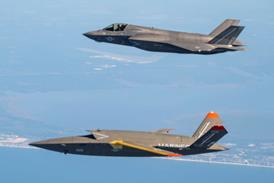Embraer is looking at a further hike in production of the Embraer ERJ-135/140/145 family of regional jets to 24 a month to accommodate anticipated major new orders. It is also planning to bring a second new facility on line to produce military and corporate versions of the aircraft.
The Brazilian company's Saõ Jose plant is due to increase production from the current 14 to 16 units per month by early 2001 and then go to 20 by the end of next year. Following American Eagle's recent launch of the ERJ-140, total sales of all versions now stand at 1,150 aircraft including 785 firm orders, of which 303 have already been delivered.
"We've several large negotiations with airlines going on and if we're to win all of them we would be very pressed to meet them," says Satoshi Yokota, Embraer vice-president industrial. "If there was demand for 24 aircraft per month for 12-18 months, the additional investment would not be too large," he adds.
Embraer had previously been concerned about ramping up production too sharply to meet short-term peaks in ERJ-145 demand, but says any subsequent spare capacity could be absorbed by the pick-up in ERJ-170 production in 2002-3. A number of major US airline regional jet competitions are still pending, including Northwest Airlines, United Airlines and US Airways.
Meanwhile, the company has broken ground at a large newly acquired site at Gaviaõ Peixoto, 370km (200nm) northwest of Saõ Jose. It will include a new ERJ-145 production plant due for completion by early 2002, a flight test facility and a 5,000m runway.
"We intend to use this site for non-standard low-volume assembly of special military and Legacy corporate versions of the aircraft, where, if the the production cycle is long, it does not interfere with regional jet output," explains Yokota. This will include the EMB-145SA airborne early warning and EMB-145RS ground surveillance versions of the jet.
Embraer is due to deliver the first ERJ-135-based Legacy in September 2001 and will have to produce the first 12 aircraft at Saõ Jose before transitioning to Gaviaõ Peixoto. The company intends to produce 18 corporate and executive versions of the 37-seat passenger jet in 2001 and 24 a year thereafter.
It will also undertake full interior completion of the Legacy at the new plant using supplied kits. The company has already secured Nordam as an initial supplier, but is looking at "competitively sourcing the kits from several different companies in the future," says Yokota.
Source: Flight International























